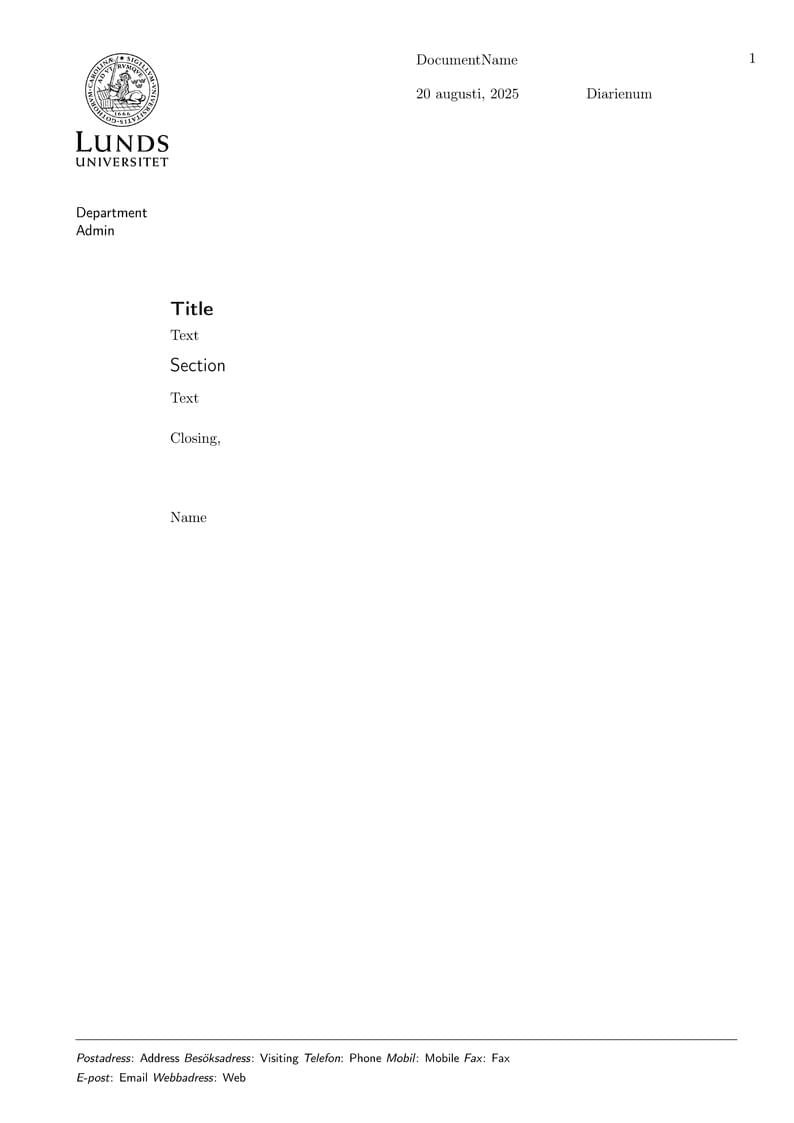
Lund University letter template
Author:
Stefan Höst, Lund University
Last Updated:
há 4 meses
License:
LaTeX Project Public License 1.3c
Abstract:
The class ulundletter for Lund University letter template. Manual included. For more information about LaTeX-templates at Lund University, please visit the Canvas page: https://canvas.education.lu.se/courses/31833

\begin
Discover why over 20 million people worldwide trust Overleaf with their work.